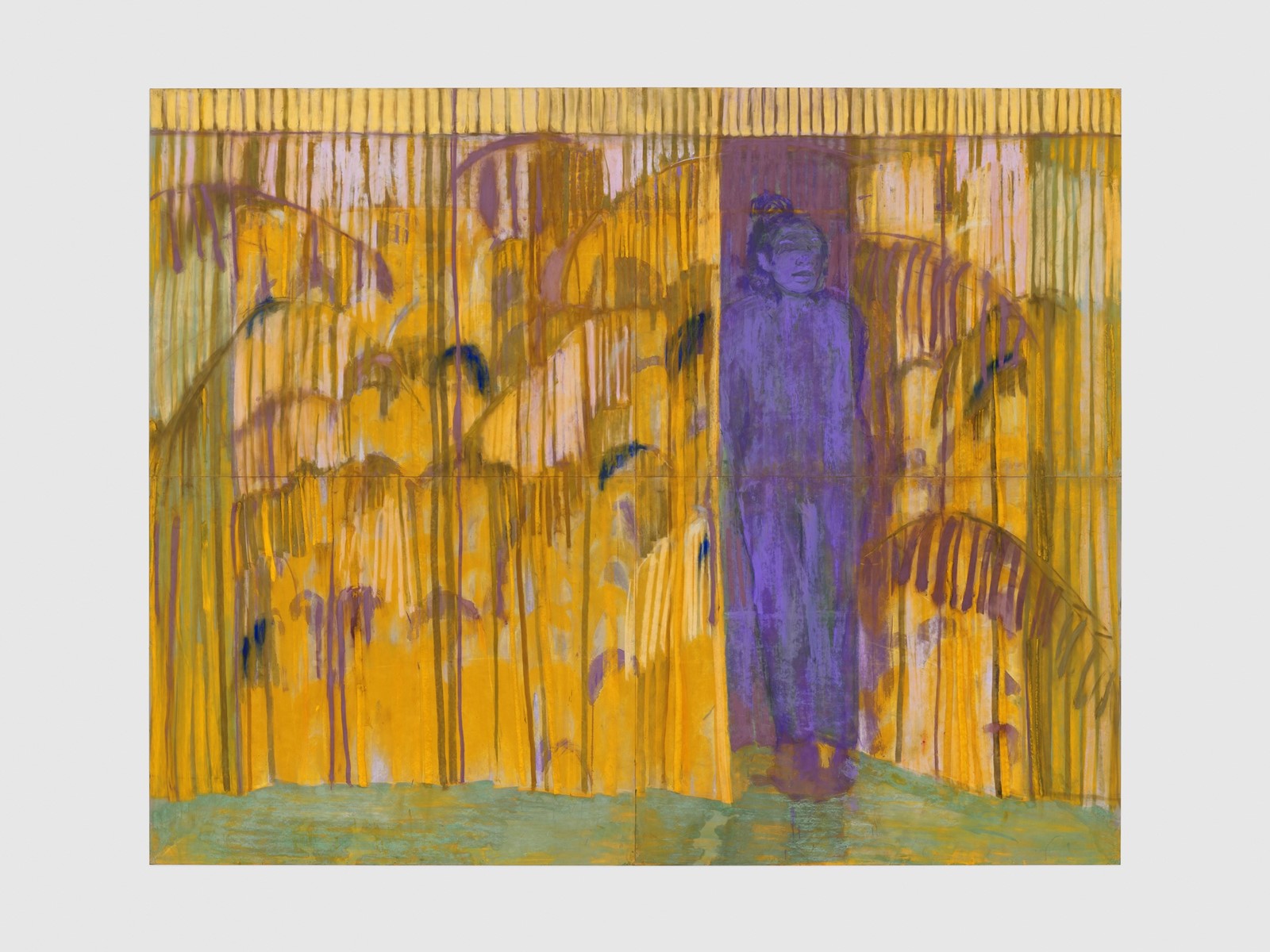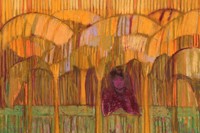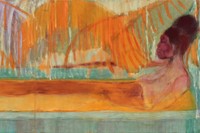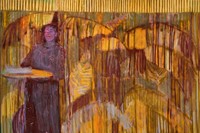Art historian, curator and writer Alayo Akinkugbe is behind the popular Instagram page A Black History of Art, which highlights overlooked Black artists, sitters, curators and thinkers, past and present. In a new column for AnOthermag.com titled Black Gazes, Akinkugbe examines a spectrum of Black perspectives from across artistic disciplines and throughout art history, asking: how do Black artists see and respond to the world around them?
Christina Kimeze is a London-based painter whose work explores the inner lives of female protagonists. Painted on a tactile suede surface as opposed to canvas, Kimeze’s scenes consist primarily of lone figures, either static or moving through the home: submerged in the bath, ambling down the stairs, perched in the garden. It is not loneliness that Kimeze focuses on, but the ‘agency’ of being alone. In her words, “You can just choose to be sitting with yourself.”
The works in her new exhibition Something other than the world might know at White Cube Paris are influenced by Kimeze’s memories of visiting Uganda, her father’s home country. The scenes are set in distinctly tropical landscapes, with banana leaves repeatedly emerging.
In the following conversation, Kimeze discusses the inspiration she took from West African cinema, the complexities of our inner lives and the sensuality of a suede surface.
Alayo Akinkugbe: Let’s begin with the title of this body of work, Something other than the world might know. Where does this phrase originate from?
Christina Kimeze: It came from a Kevin Quashie book. His first book I think, The Sovereignty of Quiet. It was really important to me when making this body of work because it addresses this idea of quiet and interiority as a way of understanding Blackness. Moving away from blackness as something which is framed around public, societal ideas about race which the conversation tends to centre on.
In his book, he talks about this idea of quiet and this sense of stillness being actually full of possibility. I was just really fascinated by this book. It’s a book that I keep returning to and I realised that in my work I’m often just trying to give form to an emotion or a feeling.
I kept returning to the idea of this intimate inner life that we all have and how we spend most of our lives just with ourselves and with our own thoughts. It’s that thing that we’re all trying to work out about ourselves, who we are. I just thought that particular phrase – borrowed from [Quashie’s] book – really beautifully brought together some of the ideas that I had been working on for the show.
AA: And it’s also the title of one of the paintings?
CK: It’s the title of one of the paintings in which there’s this idea of what we offer of ourselves. In that painting, there’s a figure coming from behind this partition, and they’re offering up a plate. When I made that painting, that gesture just came out. It’s about what we choose to show the world… what you choose to offer up of yourself and what you choose to keep.
There’s another painting in the show – the counter to that one – which is called Quiet. And in that painting, again, there’s a partition but the figure is retreating. But rather than evoke negative connotations of retreat and shyness, I wanted the retreat to be a positive thing. I suppose it’s about agency; it’s a choice, isn’t it? You can just choose to be just sitting with yourself.
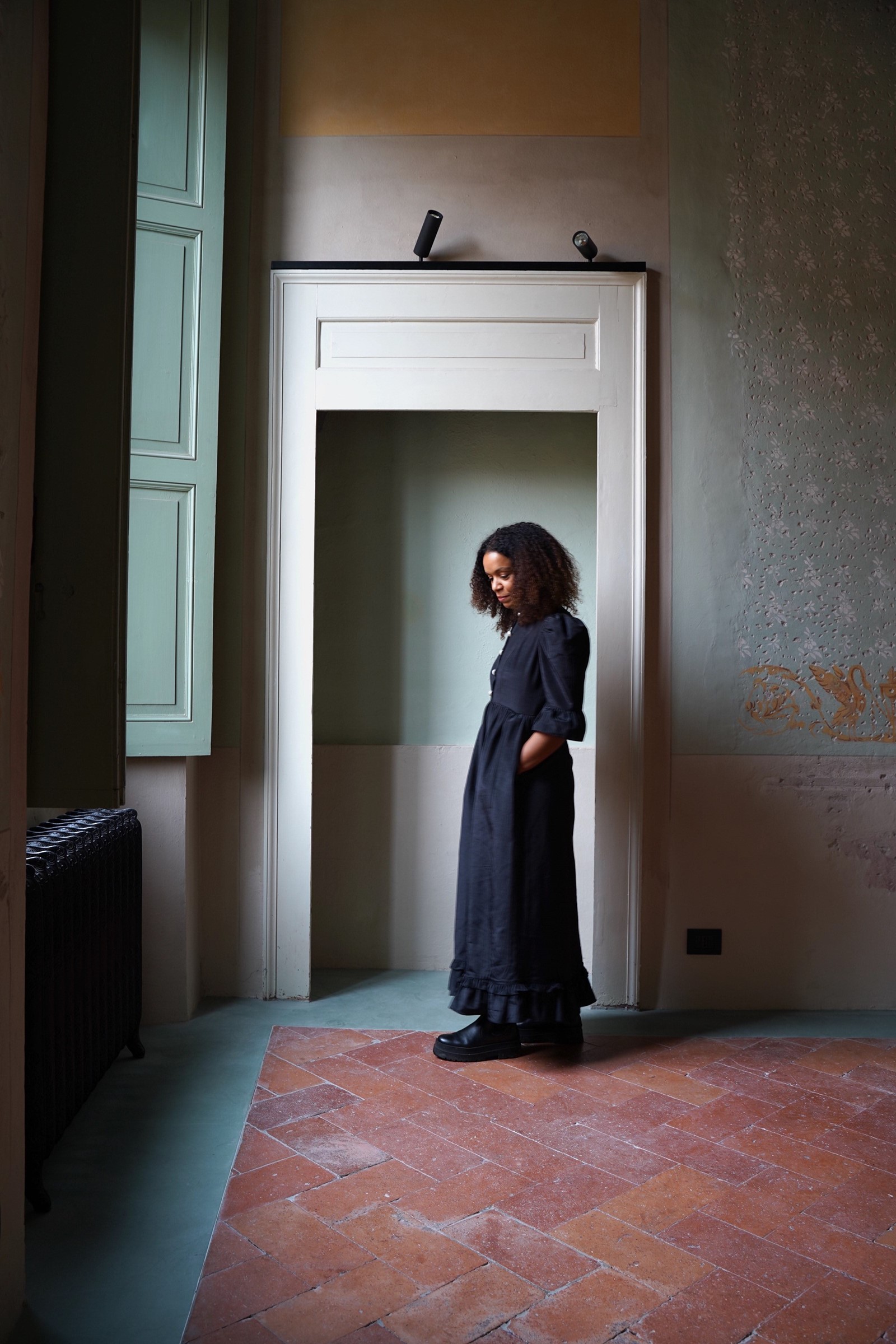
AA: The figures in this body of work often appear alone, contemplative and immersed in their inner lives, in bathtubs or moving through interiors. Are these figures inspired by any particular people, or even yourself?
CK: It’s a bit of a combination, I tend to work from drawings and paintings of some of my friends and family but I also use a mix of different sources. In the evenings, because I’ve got a little girl, I have to leave the studio by a certain time, so I tend to paint after she’s gone to bed, just at the kitchen table, from films. I usually just stop the film and then paint from it and the ideas for bigger works often build out from those smaller works. But the figures tend to be a mix of people I know myself, from films, but also from memory as well. I don’t tend to work directly from a source.
“I kept returning to the idea of this intimate inner life that we all have and how we spend most of our lives just with ourselves and with our own thoughts” – Christina Kimeze
AA: You take influence from a broad and rich lineage of Black feminist writers, and this body of work is heavily influenced by Gwendolyn Brooks’ novel Maud Martha (1953). How has the novel impacted this body of work?
CK: Part of the way that I work is to take ideas from different things that I’ve been reading and try to give them form in a painting. With that particular book, it was this idea of privileging deliberation as action. There doesn’t have to be this Hollywood blockbuster kind of plot where something really dramatic happens; actually you can just have the indecision and the arriving at the ideas as the plot in itself. I was really seduced by that notion, I found it really refreshing and empowering.
It’s that idea of stillness and quiet being anything but quiet, because you can have all of these really potent thoughts and ideas. There’s this particular part in the opening chapter of that book where she’s talking about how much she likes dandelions. There are these really voluptuous descriptions of dandelions, and it’s just so potent: locating what you take pleasure from.
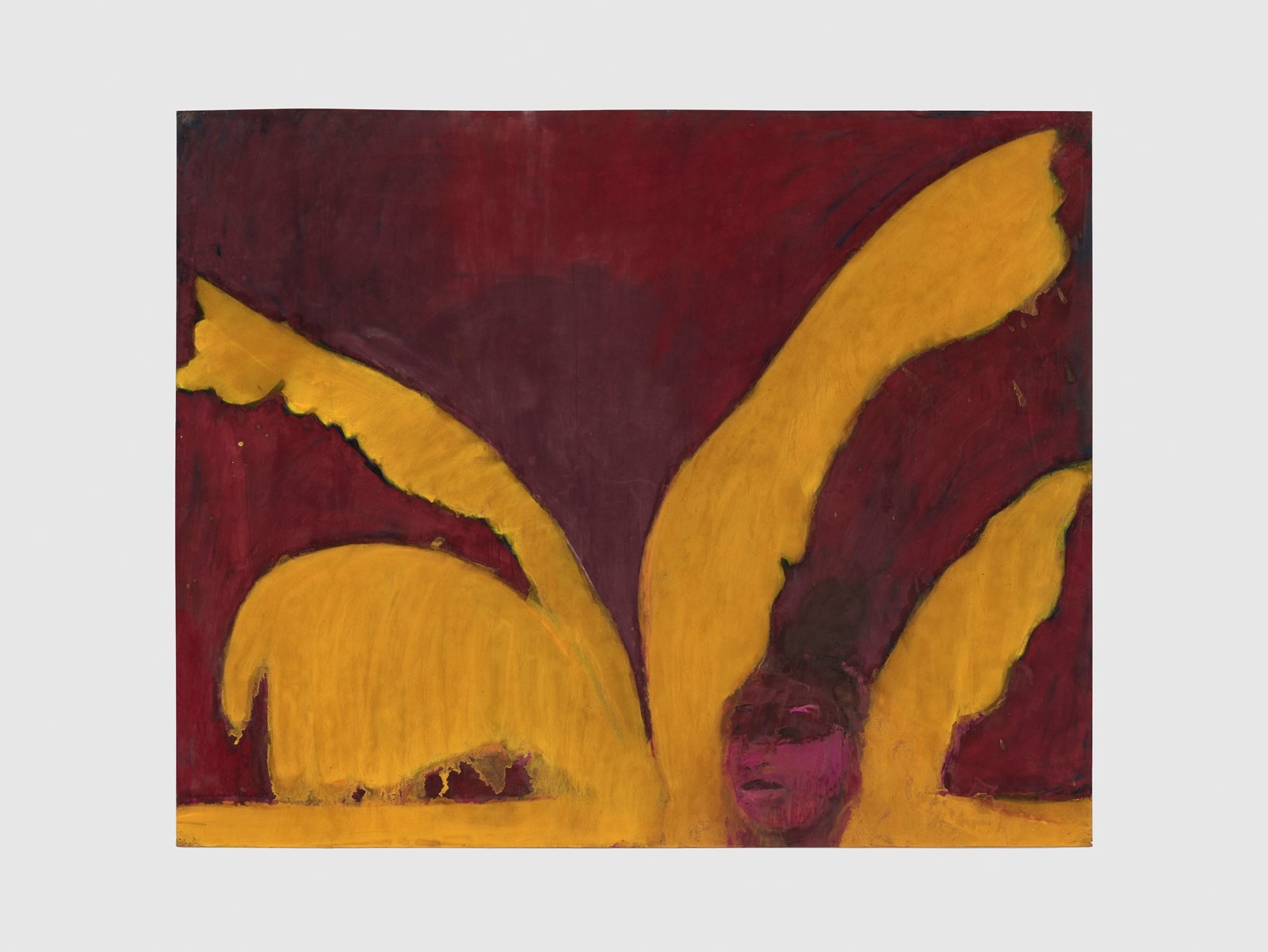
AA: There is a sense of warmth in these paintings and they seem to be set in a tropical environment. Were you influenced by a particular location or climate when you created these works?
CK: My dad is from Uganda, so a lot of my work references places in Uganda or places that I’ve been in the past. There is often a sort of heat in the work, which I think comes from me wanting to get closer to some of those memories. For this body of work, I was trying to immerse myself in memories through listening to certain music when I was painting and watching films. A lot of the films that I was painting from are set in a tropical climate. They were mainly films by [West African directors] Ousmane Sembène and Djibril Diop Mambéty.
I also kept repeating certain motifs, like the banana plant – known as matoke – leaves. With the matoke leaves it’s interesting, because of the story of where my family are from in Uganda: as a sort of precursor to colonialism, when the British came over to spread the gospel around Uganda, they asked the Buganda people to go with them and they planted these trees where they’d get the matoke fruit from, which is a staple food like rice or potatoes. So you ended up with this path of the matoke tree to Uganda as a route of colonialism. That’s something that I’ve learned since making the work, but I’ve been thinking about it a lot recently.
AA: Your technique is unique in that you combine oil paint, oil stick and soft pastel on a suede surface – I imagine this adds to the hazy ambience of the works. What appeals to you about working with this combination of materials?
CK: I found the suede surface through a very intuitive process. I was looking for a surface that was spongy and I played around stretching velvet for a while. When I found this particular surface called suede matte board, it conveyed an image of something being slightly out of focus or having a slight haziness. I like that element of not really knowing how the materials might behave together.
It’s also got a softness to it which appeals to me because of how I work, I crush the pastels into the surface. I use my hands to really work the surface and there’s a sort of sensuality to it. There’s a sensuality to painting in general.
Something other than the world might know by Christina Kimeze is on show at White Cube Paris until July 27.
